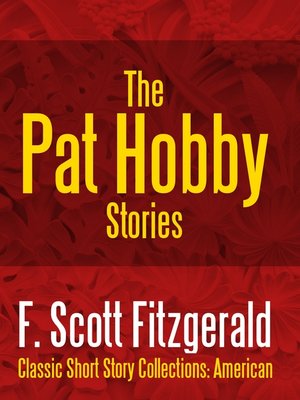
Sign up to save your library
With an OverDrive account, you can save your favorite libraries for at-a-glance information about availability. Find out more about OverDrive accounts.
Find this title in Libby, the library reading app by OverDrive.



Search for a digital library with this title
Title found at these libraries:
| Library Name | Distance |
|---|---|
| Loading... |
The setting: Hollywood: the character: Pat Hobby, a down-and-out screenwriter trying to break back into show business, but having better luck getting into bars. Written between 1939 and 1940, when F. Scott Fitzgerald was working for Universal Studios, the seventeen Pat Hobby stories were first published in Esquire magazine and present a bitterly humorous portrait of a once-successful writer who becomes a forgotten hack on a Hollywood lot. "This was not art" Pat Hobby often said, "this was an industry" where whom "you sat with at lunch was more important than what you dictated in your office."PatHobby's Christmas Wish (excerpt)
It was Christmas Eve in the studio. By eleveno'clock in the morning, Santa Claus had called on most of the hugepopulation according to each one's deserts.
Sumptuous gifts from producers to stars, and fromagents to producers arrived at offices and studio bungalows: on everystage one heard of the roguish gifts of casts to directors ordirectors to casts; champagne had gone out from publicity office tothe press. And tips of fifties, tens and fives from producers,directors and writers fell like manna upon the white collar class.
In this sort of transaction there were exceptions.Pat Hobby, for example, who knew the game from twenty years'experience, had had the idea of getting rid of his secretary the daybefore. They were sending over a new one any minute—but she wouldscarcely expect a present the first day.
Waiting for her, he walked the corridor, glancinginto open offices for signs of life. He stopped to chat with JoeHopper from the scenario department.
'Not like the old days,' he mourned, 'Then therewas a bottle on every desk.'
'There're a few around.'
'Not many.' Pat sighed. 'And afterwards we'd run apicture—made up out of cutting-room scraps.'
'I've heard. All the suppressed stuff,' saidHopper.
Pat nodded, his eyes glistening.
'Oh, it was juicy. You darned near ripped yourguts laughing—'
He broke off as the sight of a woman, pad in hand,entering his office down the hall recalled him to the sorry present.
'Gooddorf has me working over the holiday,' hecomplained bitterly.
'I wouldn't do it.'
'I wouldn't either except my four weeks are upnext Friday, and if I bucked him he wouldn't extend me.'
As he turned away Hopper knew that Pat was notbeing extended anyhow. He had been hired to script an old-fashionedhorse-opera and the boys who were 'writing behind him'—that isworking over his stuff—said that all of it was old and some didn'tmake sense.
'I'm Miss Kagle,' said Pat's new secretary...
Francis Scott Key Fitzgerald (September 24, 1896 – December 21, 1940), known professionally as F. Scott Fitzgerald, was an American novelist and short story writer, whose works illustrate the Jazz Age. While he achieved limited success in his lifetime, he is now widely regarded as one of the greatest American writers of the 20th century. Fitzgerald is considered a member of the "Lost Generation" of the 1920s. He finished four novels: This Side of Paradise, The Beautiful and Damned, The Great Gatsby, and Tender Is the Night. A fifth, unfinished novel, The Last Tycoon, was published posthumously. Fitzgerald also authored 4 collections of short stories, as well as 164 short stories in magazines during his lifetime.







